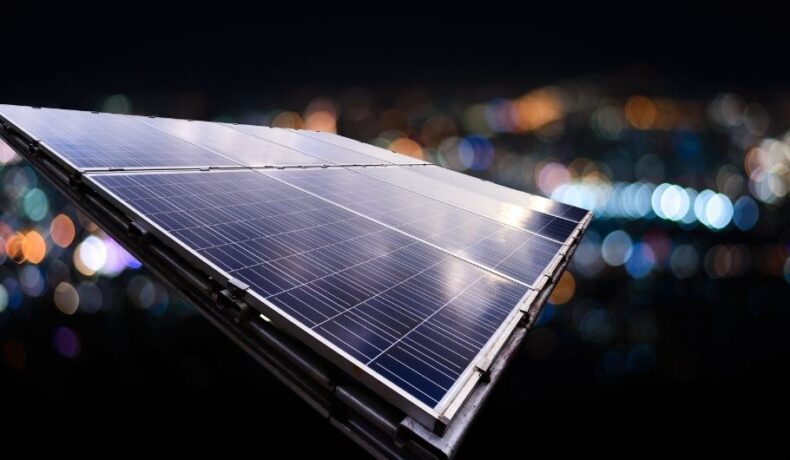Do solar panels work at night?
At first glance, this may seem like an outrageous thing to ask. I mean, solar panels by their very nature require sunlight to generate power.
But it’s actually a pretty fair question and you can learn a lot from asking it.
Here’s a different way of thinking about, or rather answering the question – it’s not so much whether solar panels can work at night or not, but rather how they can work for you at night.
So while this article will address your initial question it will also discuss how solar panels and a solar system can work for you during times when sunlight is not available.
In reading this piece, you will discover how to make the most out of your solar panels during the nighttime.
You will also learn about the time of day that solar panels operate at their peak level of performance.
I’m sure you can already see the value in asking your original question. Now it’s time to give you your answers.
Table of Contents
Do Solar Panels Work At Night?
The short answer – unfortunately not.
Solar panels do not work at night. This is because the photovoltaic (PV) cells that make up solar panels require sunlight to perform their function. When light strikes the semiconductor material of a solar cell, it releases electrons that generate electricity. Without sunlight, this process is not able to take place.
But fear not, even though solar panels cannot operate at night, you still have the ability to store and use the energy that they have generated throughout the day.
How To Make The Most Of Your Solar Panels At Night?
Remember what we said earlier – it’s not so much whether solar panels can work at night or not, but rather how they can work for you at night.
So how exactly can they work for you at night if there isn’t any sun available?
Solar Storage
Since its invention, solar power has always had an obvious problem – the sun does not shine 24/7. This used to be the main obstacle to the widespread use of solar power.
A cloud passing by, an overcast day, a starry night – any one of these situations would shut down a solar-powered operation or application in the past.
It’s easy to see why people did not trust solar to power their homes at night or during adverse weather conditions.
But the solution to this problem was relatively simple – find a way to store the energy accumulated throughout the day so that people can use it when the sun is not available.
Solar Batteries
Fortunately, in recent years solar storage technology has become more readily available and popular due to its advancements.
Recent breakthroughs with this technology have allowed solar power to become a more viable alternative to fossil fuel-powered operations and applications.
Enter, the solar battery.
Here are such battery technologies:
Lithium-Ion
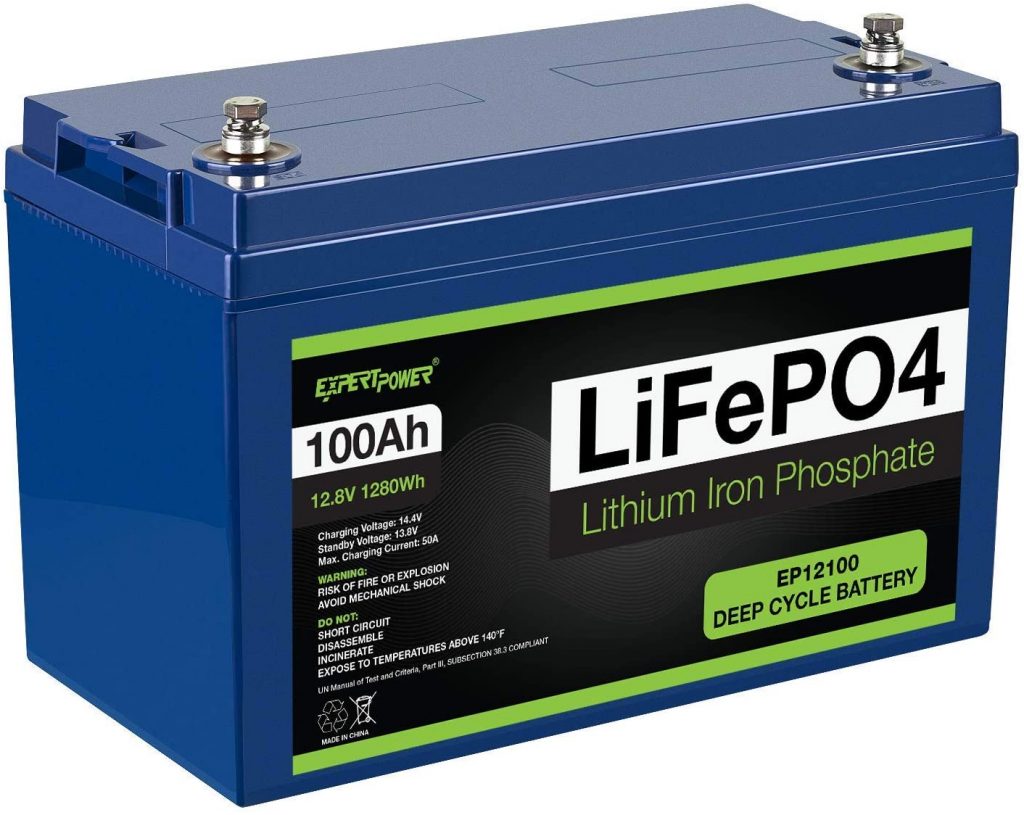
These batteries were invented in the ’80s and reached the general market in the late ’90s. They use Lithium in the form of an ion: Li+ to generate or store electricity.
Their working principle is based on the exchange of lithium ions (Li+) from one electrode to another, thanks to the electrolyte. This flow of ions generates a current outside the battery cell.
Lead-Acid
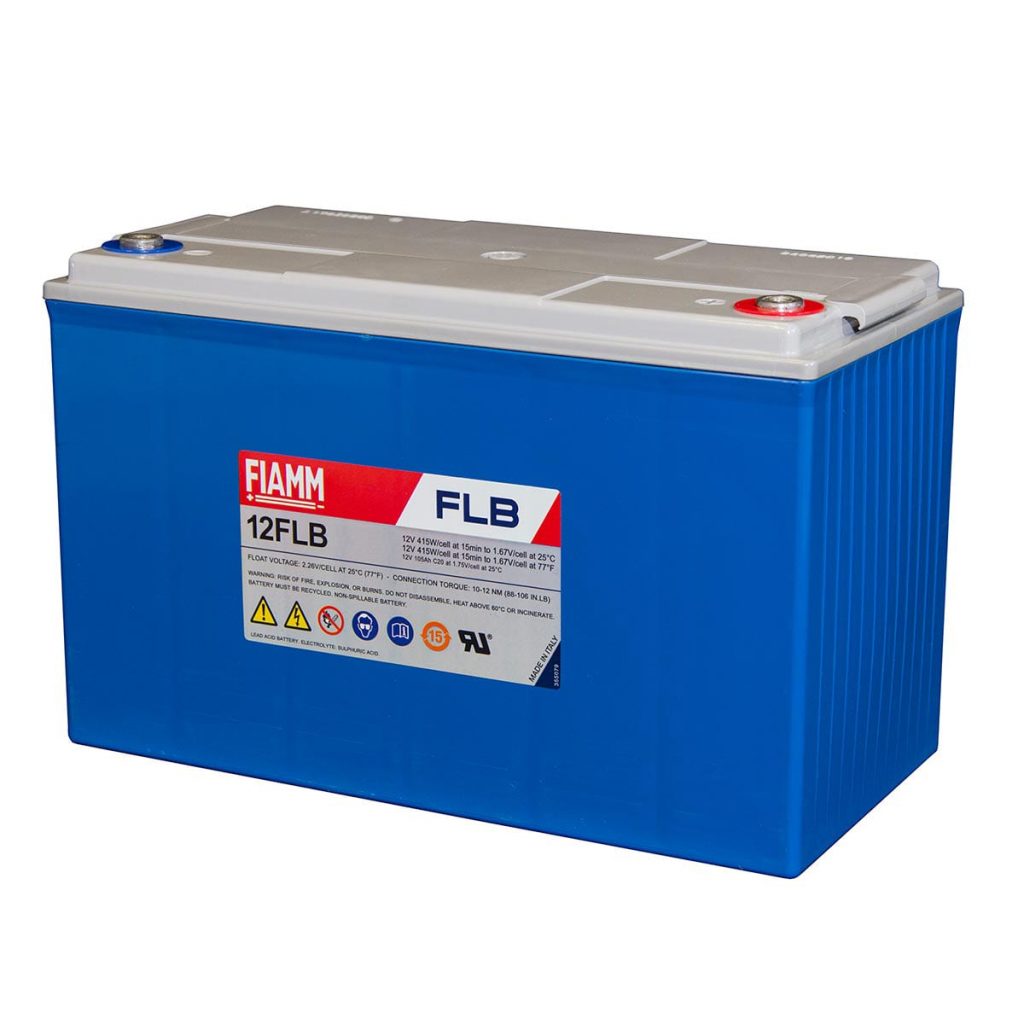
This is the oldest rechargeable battery tech, created in 1857 by Gaston Planté.
Their main active material is lead and they fall into three categories: GEL, AGM & OPzV
The basic working principle of this battery involves the exchange of H+ ions between the positive and negative electrodes through the electrolyte.
This movement of ions creates a flow of electrons (electricity) outside the battery to power a load. The opposite reaction happens when the battery is charged with solar energy.
Net Metering
This is another method that allows your solar panels to work for you at night.
Net metering (NEM) is the core principle and incentive upon which the residential solar industry is built.
How Does Net Metering Work?
Think of it as a savings account. Solar panels can produce surplus levels of electricity during the summer months. You can then take this surplus and deposit it into the electrical grid.
In return, your local power utility reimburses you or credits your bill.
At night, or during days where there is very little sunlight, you can use those energy credits that you banked for your household.
This is particularly useful during seasons where consistent levels of sunlight are hard to come by.
The great thing about this system is that it switches on when your panels aren’t producing energy. This bi-directional connection allows electricity to flow both in and out of your home.
Ultimately, this continuous flow between households and the power utility turns the grid into a communal form of solar energy storage.
If you are interested in net metering for your household, be sure to check out your local net metering policies. If you do decide to go this route, you will need to augment your solar system with appropriate solar battery storage
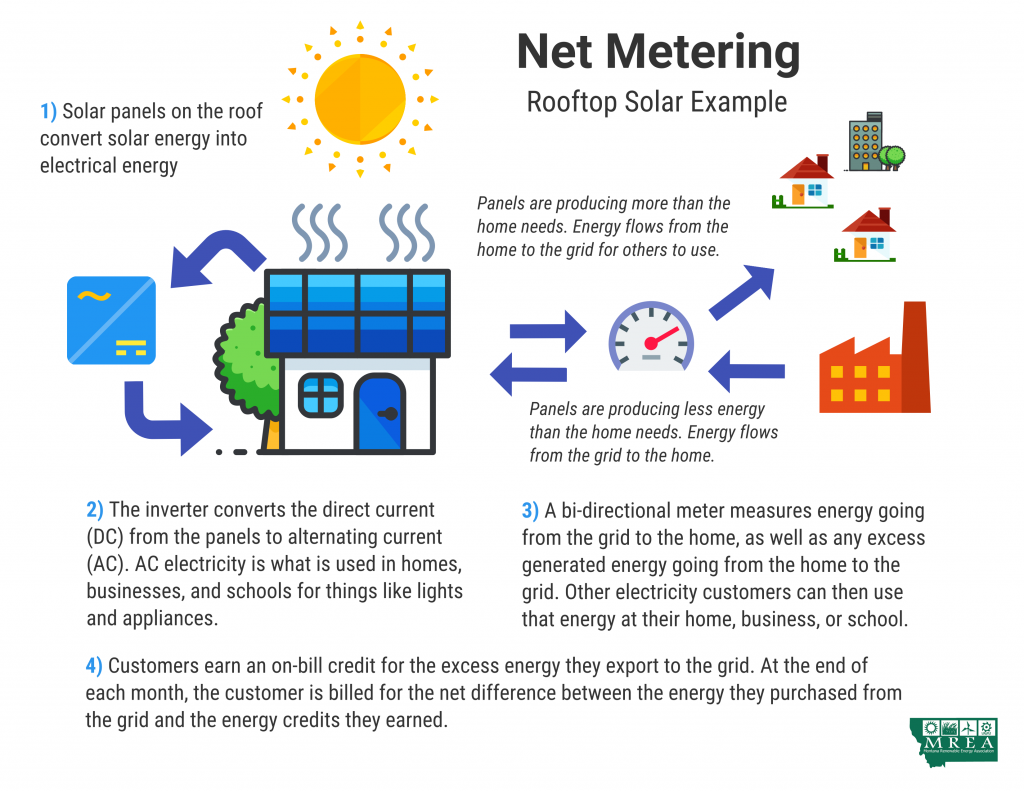
Credit to: https://montanarenewables.org/
Electricity Bills And Net Metering
Most homes will produce a surplus of electricity in the summer months. This is balanced out by them using more electricity from the grid in winter.
The fairly predictable nature of these variations incentivizes your power utility to credit you with this surplus during the summer months.
You can then access these credits during the winter months when you need them most.
In summary; When your solar power system generates more electricity than you use over the course of a month, you will receive a credit based on the net number of kilowatt-hours you gave back to the grid.
If however, you produce less electricity than you use, you will need to buy some from your utility to make up the difference.
What Is The Ultimate Purpose Of Net Metering?
Net metering has two fundamental purposes:
- To encourage the greater adoption of solar energy.
- To assist utilities and the electrical grid by helping people produce low cost solar energy.
At What Time Do Solar Panels Perform At Their Best?
As I’m sure you already know by now, solar panels rely on the sun’s energy. As such, they are at their best when there is plenty of sunlight to absorb.
So it only makes sense that they would function at a time of day when the sun is at its highest and brightest point, right?
Well yes and no, there is a bit more to it than that.
The sun’s position isn’t the only thing that determines the best time of day for your solar panels. There are a number of other factors that play a role.
These factors are:
- Peak Sun Hours
- Solar Panel Location and Angle
- Temperature
Peak Sun Hours
What are they and why do solar panels require them?
A peak sun hour equates to 1 hour in which the sun’s solar irradiance (sunlight) produces an average of 1000W (energy) per square meter (roughly 10.5 feet).
To summarise: 1 peak sun hour = 1000 W/m² of sunlight per hour.
On average, solar generation potential is at its highest from 11 am to 4 pm. This period of the day is when peak sun hours take place.

Credit to: solarreviews.com
The ability of your solar panels to generate power depends on the strength of the sun’s radiation. It is therefore easy to see why peak sun hours are such a crucial factor in determining the best time of day for solar panels.
It is important to note that peak sun hours are not the same as normal daylight hours. These hours only take place between the hours previously mentioned.
Additionally, the changing seasons, the location of your residence, and the location of your solar system will influence your peak sun hours.
Solar Panel Location and Angle
Solar panels are made up of photovoltaic cells that convert sunlight into energy. While these panels can do this throughout the day, they generate the most power when the sun shines directly on them.
The power that your solar panels generate therefore depends on the availability and angle of this direct, high-intensity sunlight.
The best time of day will provide your panels with sun rays that are at perpendicular angles to the modules. Panels will reflect solar irradiance when it does not come in from this angle.
The location and angle of your solar panels will have a direct effect on the time of day that they are at their best.
Temperature
Have you ever wondered about the effect that temperature may be having on your solar panels?
If not, you should be because solar panels and their ability to generate power are in fact affected by temperature.
Not only do they get hotter from warmer climates and more sunshine, they actually produce heat as a bi-product of absorbing sunlight.
In case you didn’t know, not all of the sunlight that solar panels absorb becomes energy; some of it is converted into heat.
This begs the question – can solar panels get too hot?
Absolutely. Hot climates, intense sunshine, and the heat generated from solar panels absorbing sunlight and producing energy can individually or collectively cause your panels to reach temperatures that can negatively affect their efficiency.
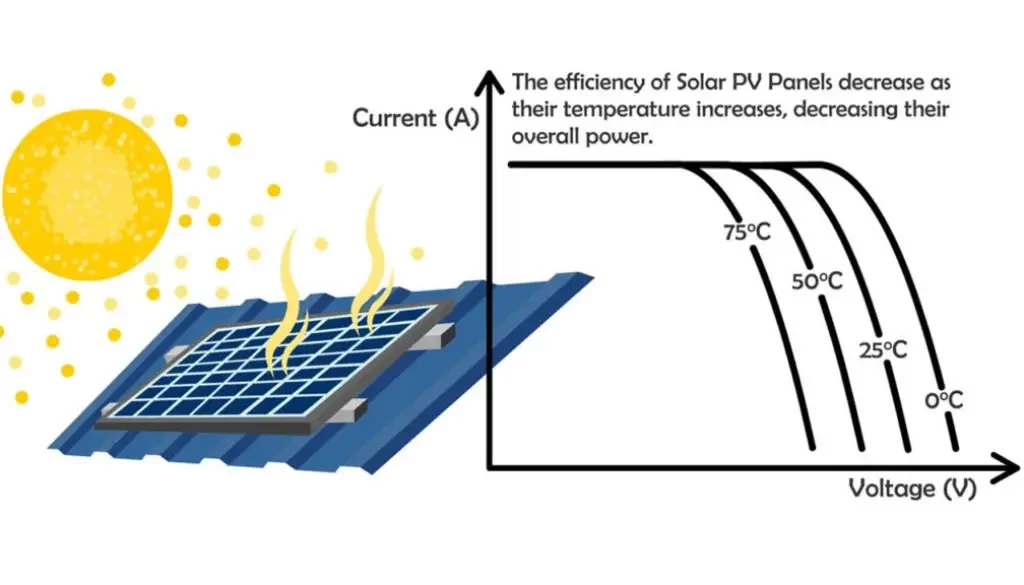
Credit to: couleenergy.com
Temperature Coefficient
A solar panel’s temperature coefficient indicates how its efficiency will decrease in relation to temperature.
The point of maximum efficiency for a solar panel lies between 59 °F and 95 °F (15 °C and 35 °C).
As the temperature rises, the efficiency of the panel will begin to drop and it will produce less energy.
So how exactly does the temperature coefficient relate to solar panels and warmer temperatures?
Higher temperatures negatively impact the energy production of photovoltaic cells.
Manufacturers use the temperature coefficient to predict efficiency loss for each degree above 77 °F (25 °C).
A typical temperature coefficient is 0.5%/°C. So, if on a hot day your solar panel heats up to 99 °F (35 °C), you can expect your solar panel’s efficiency to drop by about 5%.
It is important to note that while solar cells can perform reliably at a range of temperatures, they are at their best in temperatures below 77 °F (25 °C).
Final Thoughts
While your solar panels are reliant on sunlight to generate power, the lack of sun is not an obstacle that cannot be overcome.
Net metering is playing a massive role in providing power to households during the nighttime and those wintery, overcast days.
Additionally, solar storage technology is continuously improving, with more options being available to you, the consumer, every year.
If you have the know-how and the means, you will be able to plan ahead and benefit from your solar system even when weather conditions aren’t quite working in your favor.

